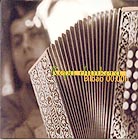 |
||||||||||||||||||||
| During my earlier review of the $5,000 Reimyo unit vis-à-vis my Stealth, I had noted my unexpected preference for the joint US/Japanese conditioner particularly on classical music (which I now listen to only rarely). "... The Reimyo was more elegant and organic, smoother and more romantic - in a word breathtaking. By comparison, the Stealth sounded harder, brighter, more muscular, as though tonally I had moved closer to the stage and heard more of the piano's percussive qualities with its metallic bite that veered on sounded brittle in its upper register... | ||||||||||||||||||||
Sifting through other classical albums, I eventually came to a conclusion. What on non-classical material was a very welcome "stealthy" infusion of energy, snap and vitality turned, with classical performances -- especially truly well-recorded ones that didn't need the extra light and vigor of the Stealth to make things come to life -- into a lessening of what I can only call an organically breathing quality. This, depending on the recording, tended to make the Combak Reimyo ALS-777 into a sweeter sounding unit that better preserved the flow of the music ... " |
||||||||||||||||||||
 |
||||||||||||||||||||
| Would I note a similar difference now, between the Q.R.T.-equipped Velocitor and Stealth? For massed strings, I can think of no better rainy-afternoon programme than Tchaikovsky's Serenade for Strings in C., Op. 48, followed by Dvorák's equivalent Serenade in E, Op. 22 [Bavarian Radio Symphony Orchestra under Sir Colin Davis, Philips 422031-2]. |
||||||||||||||||||||
| I a word, yes. In more than one, terms like 'elegant', 'smooth', 'sonorous', 'velvety', 'majestic' and 'oceanic' chummed up to the pen. With the Audio Magic unit, some of the natural woody warmth of resonating cavities turned more whitish, especially with the entire violin section emoting with open zippers in the upper registers. This highlighted the raspy noise components of horse hairs on strings friction while building out the nearly subliminal canopy of high-frequency dither hanging over the far-miked orchestra. It introduced a sense of timbral sharpness somewhat at odds with the lyrical romanticism of the piece. While soundstage size and depth are very secondary attributes in the greater hierarchy of what communicates emotionally, they are highly enjoyable when all other distractions of electronic artifice have been banished or minimized. The Velocitor cast cavernous depth, reminding me of the Stealth Kukama 24/96 DAC that pulled a similar down-with-the-backwall trick. The Walker also created a sense of no-ceiling expanse, not by physically projecting abnormal height but by letting sounds rise upward and exhale. | ||||||||||||||||||||
 |
||||||||||||||||||||
This sense of breath was subtle but discernable and in contrast to the Stealth's more resolute manner. An interesting polarity, this - from great rhythmic precision during highly percussive passages to such unfettered free flow during extended phrases of great cantabile delivery. It confirmed an innate sense of balance rather than a one-trick-pony approach. |
||||||||||||||||||||
| Needless to say, the enhanced precision of tonal beginnings spelled great lucidity amidst tumultuous clashes of orchestral sections, as in the famous last movement of Leos Janacek's Taras Bulba orchestral suite [Szell/Davis, Sony 62404] that has the French horn brigade brave large glissandi at full tilt while all hell brakes loose around them. The accompanying Sinfonietta with its full metal jacket brass chorus combined sabre-rattlin' blattiness with full-bore tone, showing off both fierce staccato bite and great legato weight, another mean balance to uphold. Both symphonic poems appeared to benefit from the absence of any current-restricting materials. Tympanies, cymbal crashes and large-scale crescendoes all had the limitless demeanor of far greater potential than real-world listening environs could support without clipping your ears. |
||||||||||||||||||||
 |
||||||||||||||||||||
| Remembering Lloyd's astute hand in naming conventions -- his Vivid CD cleaning fluid does exactly that, vivify -- the Velocitor's nom-de-guerre is an equally apt characterization. Rather than only give the illusion -- by cranking up aural contrast settings for greater timbral sharpness -- it actually accelerates leading edges per se. How did Walker arrive at that specific quality without committing the usual sins? I have no idea. Having talked with him repeatedly through his protracted AC conditioning journey -- including proud ownership of Sound Application CF-Xs, an Audio Magic Stealth, multiple Quantum Products Symphonys -- I'm only certain that the 2-years-in-the-works Velocitor constitutes the tweaked-to-death sum of its parts. No single constituent is solely or even mostly responsible for the final end result. As far as the parts go, it's a team effort. When asked how he dreams this stuff up, what's the famous Walker repartee? "I listen!" It's always delivered dead-pan disingenuously, as though the unspoken conclusion went "you moron". The tone of voice implies complete bafflement, this terse answer clearly being the most obvious thing in the world. It makes a thin-skinned questioner feel like - well, a moron. The longer version? "I read all the doggone text books, then I throw 'em away and listen". The even longer one? "The magic's in the details. Get outta here, I got work to do." Lloyd requested that I don't open the unit up. He explained that I'd never get it back together properly. The miniature Resonance Control Kit is compression-fitted and apparently calibrated to interact with internal components and the outer chassis just so. Which brings us to the cutting board - er, butcher block support. Walker's fondness for the material is, surprise, surprise, based on extensive listening. Rock maple is one of the densest woods around while the stave lamination of butcher block injects large glue surfaces that break up resonance modes. |
||||||||||||||||||||
| I'll be brief. As Snoopy would say, argh. Beat again. Not conceding easy defeat at this stage, I did the silly on/off dance until I was sure. I'm sure, I just don't bloody understand it one iota. The Velocitor coupled directly to the floor -- Italian tile on concrete in my case, with the lead discs and permanently mounted Ultimate Valid Points in-between -- sounded clearly sharper. Edgier if you will. On Basque accordionist Kepa Junkera's Bilbao 00:00h [Alula 1017, 1999] Dulce Pontes sings a tune made famous by the barefooted diva of the Cape Verde islands, Cesaria Evoria - "Sodade". Junkera's trikitixa has a slightly strident tone - the unsupported Velocitor underscored this. Carlos Beceior's Braguese guitar is inherently lean, silvery - it sounded thinner without the block. Dulce's sensual delivery is greatly more coquettish and set into far higher register than Gran Dame Cesaria's. Here too, the floor-parked conditioner injected a dose of sharpness that robbed the singer of some of her prior winsome suaveness. | ||||||||||||||||||||
 |
||||||||||||||||||||
Based on my evaluation, I'll have to call the supportive bed an integral part of the Velocitor's complete performance envelope. Don't get me started with pillow and blanket jokes! Perhaps Lloyd will see fit to shed some light on this mysterious part of the equation in his manufacturer's reply? At this point, I'm not even sure he'll say anything, possibly preferring to cloak himself in unreadable silence like an inscrutable Zen master. If so, I welcome callous shots of disbelief to my battered bow. If you have the opportunity, you tell me whether the properly bedded Velocitor doesn't sound - er, more properly satisfied and smoothed over than his more restless alter ego tossing still lustingly on the bare floor? Before you suspect this entire review was a setup, rest assured that I wrote the whole first intro page well in advance of the actual unit arriving. While prior experience suggested that the Velocitor would likely be a winner, I was determined to be extra critical. Hero worship can too easily turn a blind eye. Or earn a black one if you pick your bouts carelessly. I'll leave you with two things then. As anyone who's ever had dealings with him will confirm, Lloyd could sell soda to Coca-Cola's brass, especially if it were based on his own recipe. And - so far he hasn't been wrong yet. Fellow moonie Stephaen's taken delivery of Walker's Precision Motor Controller and a set of High Definition Links to contribute an independent slant. Regardless of what he'll find, in my little black book, Walker remains one of the unsung heroes in our upscale audiophile scene. The man's clearly got very good ears. And while his Proscenium Gold turntable will set you back some very serious bread, the Velocitor, based on what it competes against -- the $5,000 Reimyo, the $4K+ Sound Application, the Audio Magic Stealth (haven't heard the new Matrix yet, nor the soon-to-be-released $2K Shunyata Hydra-8) -- is priced to comfortably niche into the current scene of high-performance AC line conditioners, enhancers, purifiers and now 'accelerators'. |
||||||||||||||||||||
This unit does not perform voltage stabilization, something I've long found highly circumspect seeing how audio power supplies already contain regulation that makes the equipment tolerant of minor under- and over-voltages. The Velocitor does not contain surge or spike protection either. Its maker's contention is that you're better off installing such at your main circuit breaker as far removed from your audio as possible. Lloyd's mantra? If it's the best sound you want, don't mess with any of that. Until I hear better, this Velociraptor rules! |
 |
|||||||||||||||||||
 |
||||||||||||||||||||
 |
||||||||||||||||||||
 |
||||||||||||||||||||
|
Manufacturer's website
|
||||||||||||||||||||
 |
||||||||||||||||||||